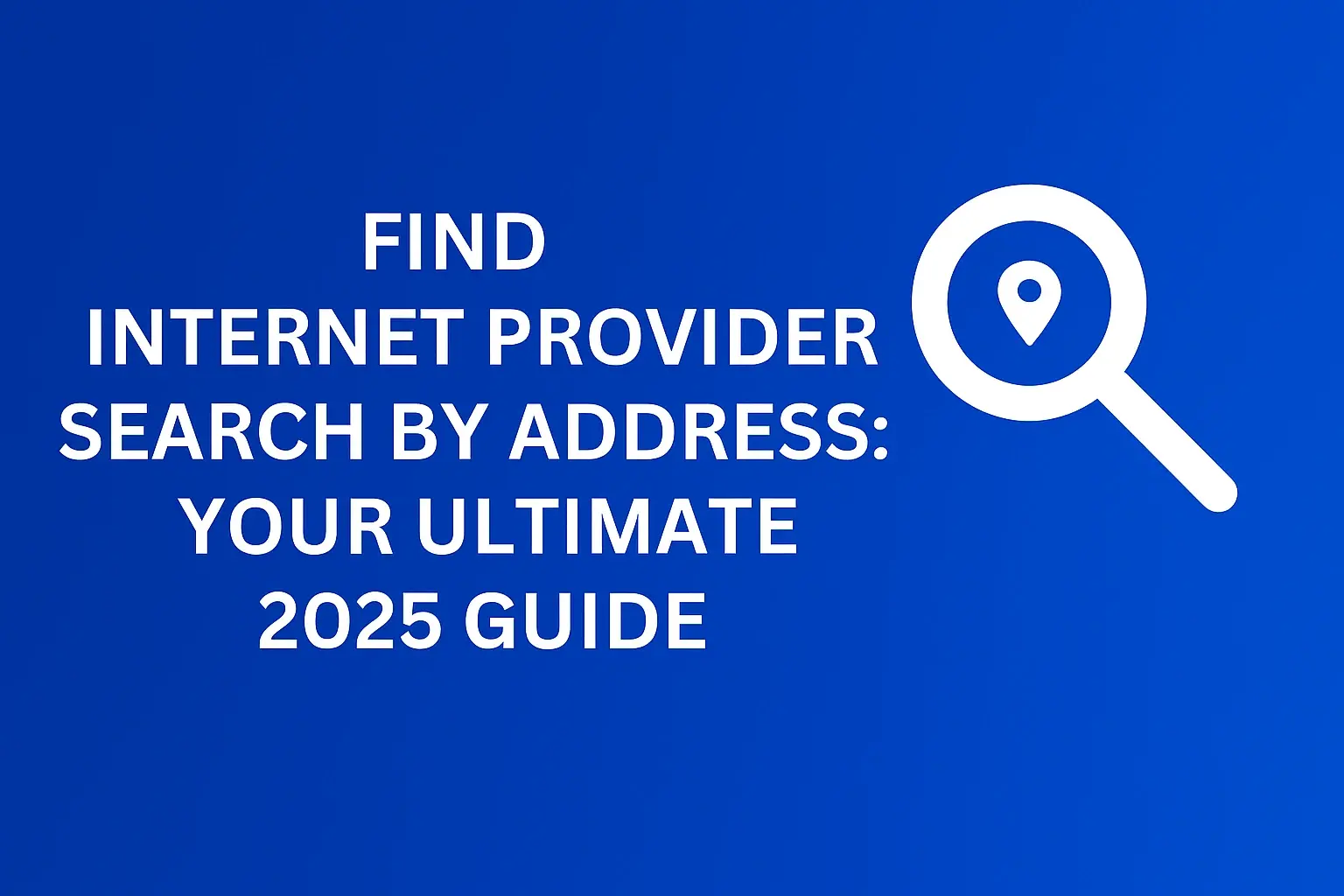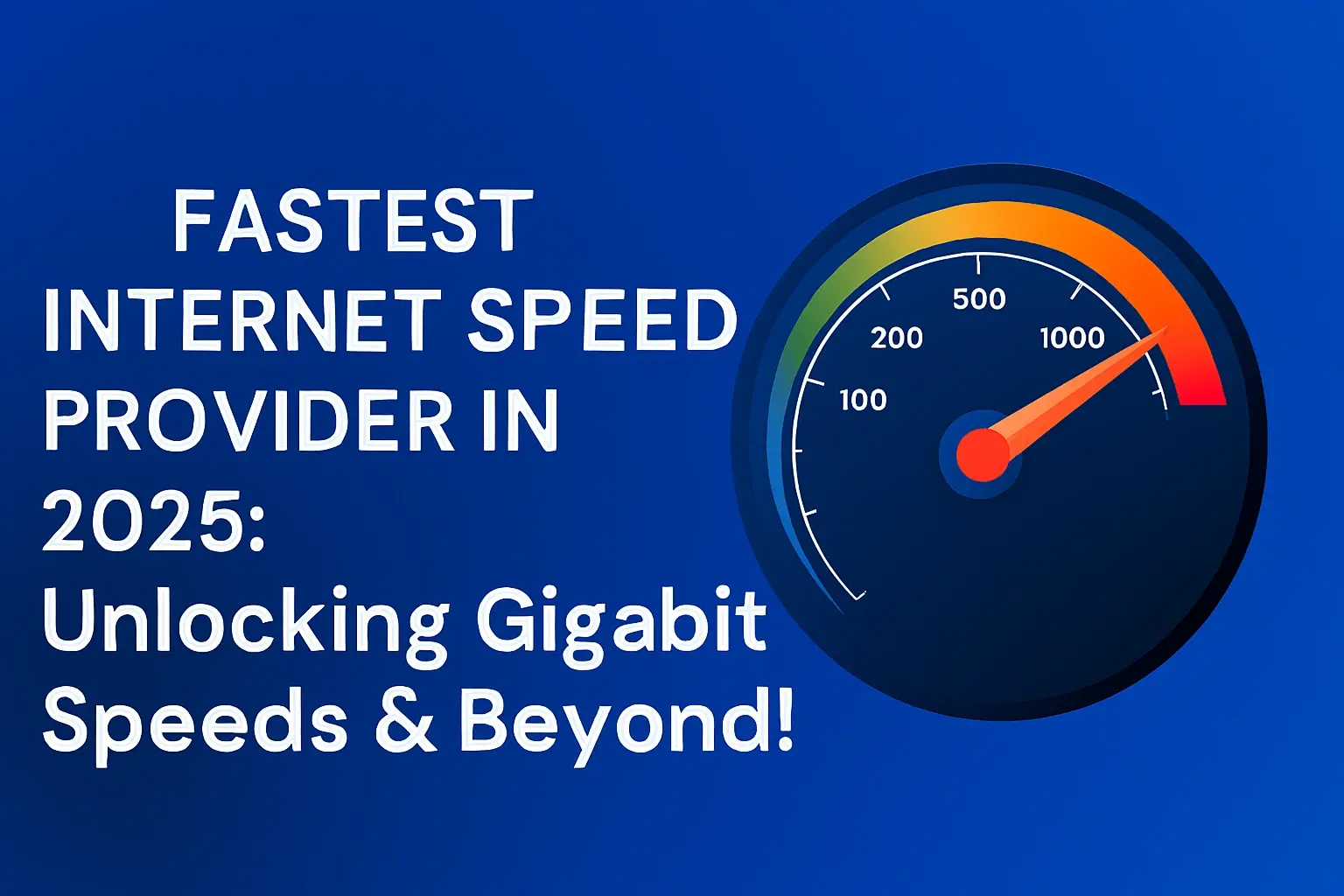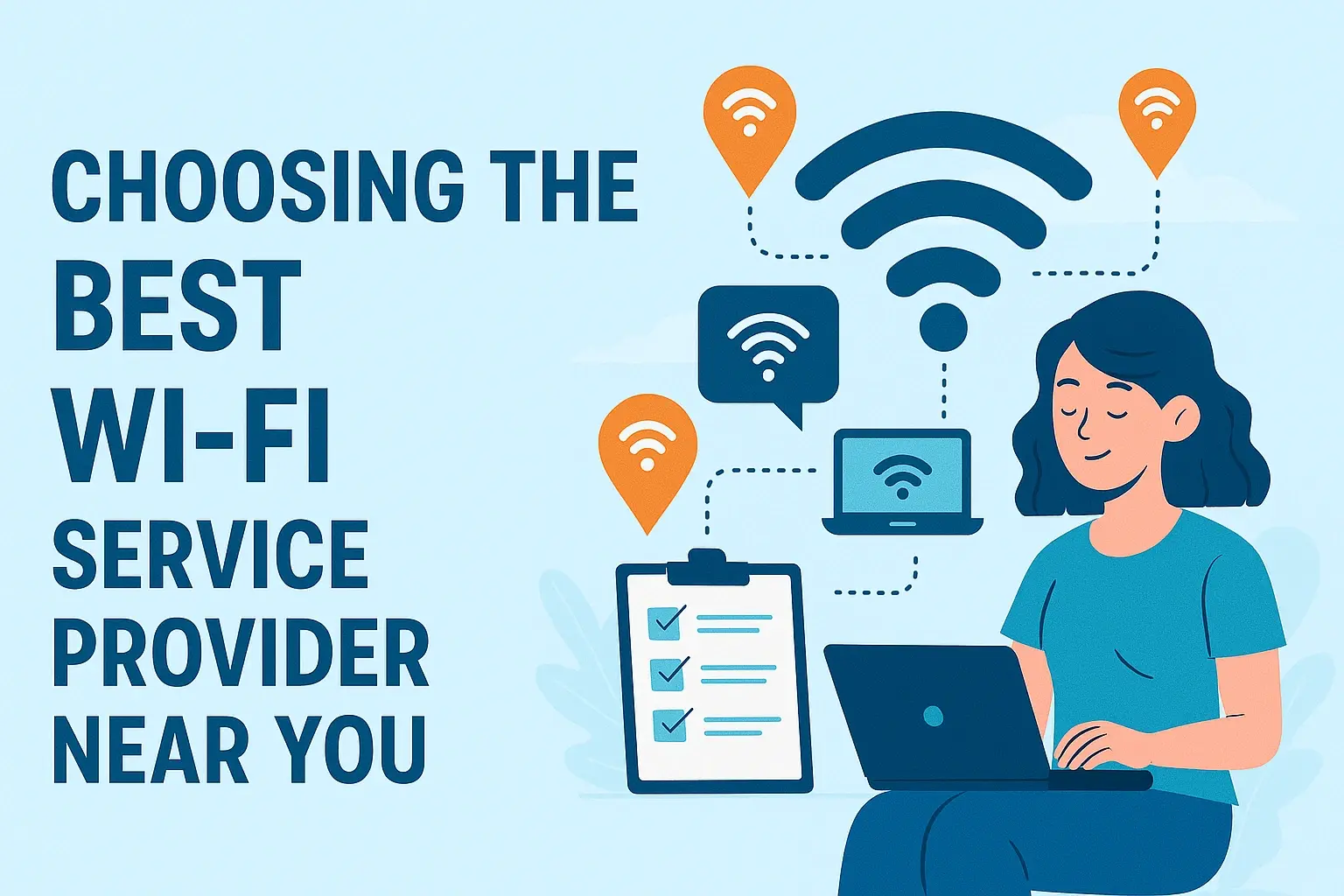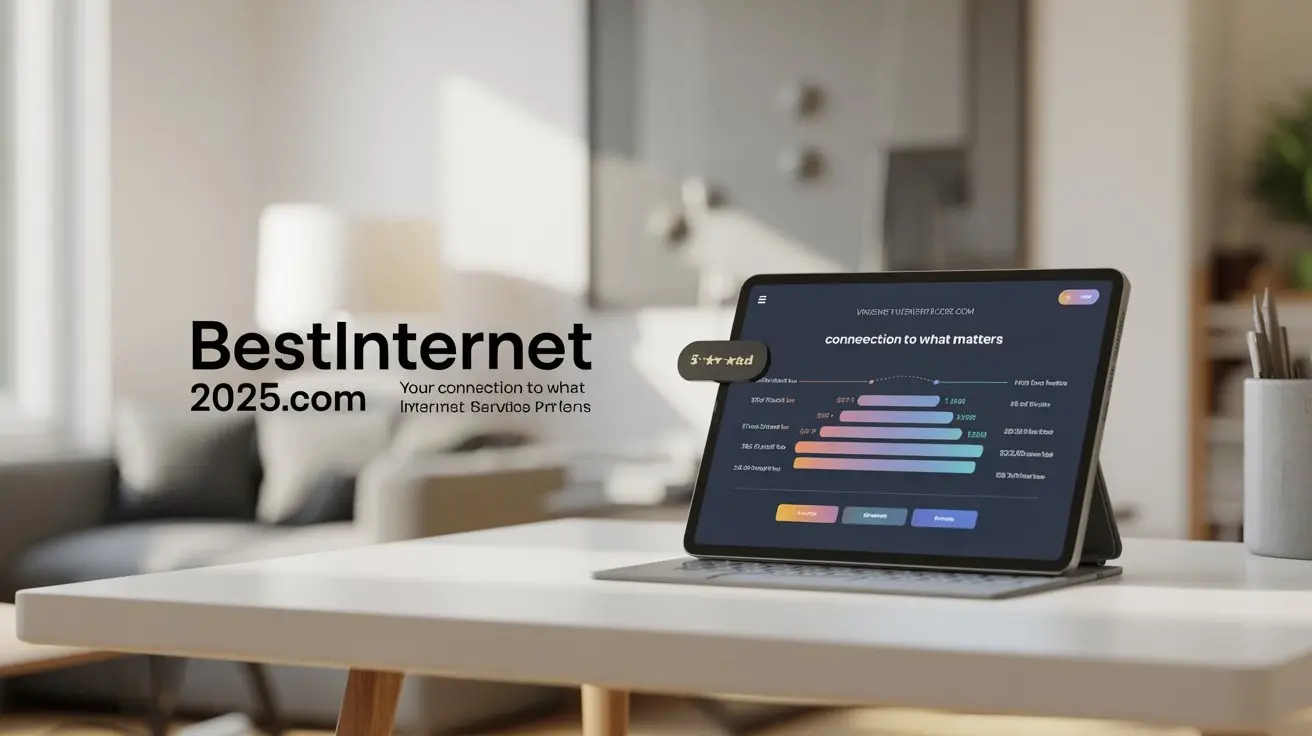Ultra-Fast High Speed Internet for Business - Upgrade Today!

Unlock unparalleled business growth with ultra-fast, high-speed internet. This guide reveals how upgrading your connectivity can revolutionize operations, boost productivity, and provide a critical competitive edge in today's digital landscape. Discover the solutions you need to thrive.
Why Upgrade to Ultra-Fast High-Speed Internet for Your Business?
In the dynamic business environment of 2025, the speed and reliability of your internet connection are no longer mere conveniences; they are foundational pillars of operational efficiency and strategic advantage. Businesses still relying on sluggish, outdated internet services are inadvertently handicapping their potential. The digital transformation has accelerated, making cloud-based applications, real-time data analytics, seamless video conferencing, and instant file transfers not just desirable but essential. An upgrade to ultra-fast, high-speed internet is a direct investment in your company's agility, productivity, and long-term success. It’s about ensuring your business can keep pace with, and ideally outpace, the competition in an increasingly connected world.
The Evolving Digital Landscape of 2025
The digital landscape in 2025 is characterized by an insatiable demand for bandwidth and near-instantaneous data transfer. Emerging technologies like advanced AI-driven analytics, immersive AR/VR for training and collaboration, and the ever-expanding Internet of Things (IoT) all place immense strain on existing network infrastructures. Businesses that fail to adapt risk falling behind. Consider the sheer volume of data generated daily; by 2025, it's estimated that over 1.5 zettabytes of data will be created each day. This data deluge requires robust infrastructure to process, analyze, and act upon effectively. Slow internet becomes a bottleneck, preventing businesses from leveraging these powerful tools.
The Cost of Slow Connectivity
The hidden costs of slow internet are substantial. Productivity losses due to waiting for downloads, uploads, or application responsiveness add up significantly over time. Missed opportunities, such as delayed responses to customer inquiries or inability to participate in time-sensitive online auctions or trading, can have direct financial repercussions. Furthermore, unreliable connections lead to frustrating interruptions, impacting employee morale and customer satisfaction. In 2025, a slow connection isn't just an inconvenience; it's a direct drain on resources and a barrier to innovation.
The Imperative for Speed and Reliability
Ultra-fast, high-speed internet provides the necessary foundation for modern business operations. It ensures that your team can collaborate seamlessly, access critical data instantaneously, and utilize bandwidth-intensive applications without lag. This reliability translates into consistent performance, allowing your business to operate at peak efficiency, regardless of the demands placed upon it. It’s about building a resilient digital infrastructure that can support current needs and scale with future growth.
The Tangible Benefits of High-Speed Business Internet
Upgrading to ultra-fast, high-speed internet for your business yields a cascade of tangible benefits that directly impact your bottom line and operational effectiveness. These advantages extend beyond simply faster downloads, influencing everything from employee productivity to customer engagement and overall business agility. In 2025, these benefits are not just 'nice-to-haves' but critical components for survival and growth.
Enhanced Employee Productivity and Collaboration
The most immediate impact of high-speed internet is felt by your employees. When applications load instantly, files transfer in seconds, and video conferences are crystal clear, employees can focus on their work rather than battling with technology. This reduction in waiting time translates directly into increased output. According to a 2025 study by Tech Insights, businesses with high-speed internet reported an average productivity increase of 15-20% due to reduced technical friction.
- Reduced Downtime: Less time spent waiting for slow connections means more time spent on revenue-generating activities.
- Seamless Cloud Access: Instantaneous access to cloud-based CRM, ERP, project management, and storage solutions is crucial for modern workflows.
- Effective Communication: High-definition video conferencing and instant messaging ensure clear, efficient communication, whether with remote teams or clients.
- Faster Data Handling: Large file transfers, crucial for design, media, or research-intensive industries, become significantly more efficient.
Improved Customer Experience and Satisfaction
In today's competitive market, customer experience is paramount. High-speed internet enables businesses to provide faster, more responsive service. This includes quicker website loading times, faster transaction processing, and the ability to offer real-time support through live chat or video calls. A study in 2025 indicated that 70% of consumers expect websites to load within 2 seconds, and 53% will abandon a mobile site that takes longer than 3 seconds to load. Slow internet directly impacts customer acquisition and retention.
- Faster Website Performance: Ensures potential customers don't leave due to slow loading pages.
- Real-time Support: Enables immediate responses to customer queries via chat, email, or even video.
- Streamlined Transactions: Faster processing of online orders and payments improves customer convenience.
- Enhanced Online Services: Supports richer, more interactive online experiences, such as streaming product demos or virtual consultations.
Greater Business Agility and Scalability
The ability to adapt quickly to market changes and scale operations is vital. High-speed internet provides the agility needed to embrace new technologies and business models. Whether it's launching a new online service, expanding into remote work, or adopting AI-powered tools, a robust internet connection ensures you can do so without technical limitations. By 2025, businesses that can rapidly deploy new digital services are significantly more likely to capture market share.
- Rapid Deployment of New Services: Quickly launch new online platforms or digital offerings.
- Support for Remote Workforces: Facilitates seamless and secure remote access for employees, offering flexibility and access to a wider talent pool.
- Scalability of Operations: Easily scale up or down bandwidth usage based on business needs without significant infrastructure overhauls.
- Integration of Advanced Technologies: Supports the seamless integration of AI, IoT, and other data-intensive technologies.
Cost Savings and Efficiency
While an upgrade represents an investment, the long-term cost savings are substantial. Increased productivity, reduced downtime, and the ability to leverage more efficient cloud-based solutions often outweigh the monthly internet costs. Furthermore, by streamlining operations and improving customer retention, high-speed internet contributes directly to profitability. For instance, reducing customer service response times can lead to higher customer lifetime value, a key metric in 2025 business strategy.
- Reduced Operational Inefficiencies: Minimize time lost due to technical issues.
- Optimized Cloud Spending: Efficient use of cloud services can lead to cost reductions compared to on-premise solutions.
- Improved Decision-Making: Faster access to real-time data allows for more informed and timely business decisions.
- Lower IT Support Costs: Fewer connectivity issues often translate to reduced IT support tickets and troubleshooting time.
Understanding Your Ultra-Fast Business Internet Options
Selecting the right ultra-fast, high-speed internet technology is crucial for meeting your business's specific demands. The landscape offers several advanced options, each with its unique strengths, speeds, and suitability for different business types and locations. Understanding these technologies ensures you make an informed decision that aligns with your operational needs and future growth plans. As of 2025, the primary contenders for high-speed business internet are fiber optic, advanced cable, and fixed wireless, each offering significant improvements over legacy technologies.
Fiber Optic Internet: The Gold Standard
Fiber optic internet is widely considered the pinnacle of high-speed connectivity. It transmits data using light signals through thin strands of glass or plastic, offering unparalleled speed, reliability, and bandwidth. Fiber is symmetrical, meaning upload and download speeds are identical, which is critical for businesses that rely heavily on cloud backups, video conferencing, and large file uploads.
- Speeds: Typically ranges from 100 Mbps to 10 Gbps and beyond.
- Reliability: Highly resistant to electromagnetic interference and weather conditions, offering superior uptime.
- Bandwidth: Offers virtually unlimited bandwidth potential, capable of supporting massive data transfer needs.
- Latency: Extremely low latency, crucial for real-time applications like VoIP, online gaming, and high-frequency trading.
- Best For: Businesses of all sizes, especially those with high bandwidth demands, mission-critical operations, and a need for consistent, low-latency performance.
Advanced Cable Internet (DOCSIS 3.1/4.0)
Cable internet, leveraging coaxial cable infrastructure, has seen significant upgrades with DOCSIS (Data Over Cable Service Interface Specification) 3.1 and the emerging DOCSIS 4.0. These advancements allow for much higher speeds than previously possible, making it a viable high-speed option for many businesses, particularly in areas where fiber is not yet available.
- Speeds: Can offer download speeds up to 1 Gbps or more, with upload speeds typically lower but improving with newer standards.
- Reliability: Generally reliable, though speeds can be affected by network congestion as it's a shared medium.
- Bandwidth: Sufficient for most small to medium-sized businesses, but may become a bottleneck for very large enterprises with extreme demands.
- Latency: Moderate latency, generally acceptable for most business applications but not as low as fiber.
- Best For: Small to medium-sized businesses looking for a cost-effective high-speed solution where fiber is unavailable or too expensive.
Fixed Wireless Internet
Fixed wireless provides high-speed internet access without the need for physical cables to the business premises. It uses radio waves to connect a business's location to a nearby tower or access point. This technology has become increasingly sophisticated, offering speeds that can rival wired connections in certain scenarios.
- Speeds: Can range from 50 Mbps to over 1 Gbps, depending on the provider and technology used (e.g., millimeter wave).
- Reliability: Performance can be affected by line-of-sight obstructions and weather conditions, though newer technologies are more resilient.
- Bandwidth: Varies significantly by provider and technology; some offer dedicated bandwidth options.
- Latency: Generally lower latency than traditional wireless but higher than fiber.
- Best For: Businesses in rural or underserved areas where wired infrastructure is limited, or as a redundant backup connection.
5G Business Internet
The rollout of 5G technology is transforming fixed wireless capabilities. Businesses can leverage 5G for high-speed, low-latency internet access, often with greater flexibility and quicker deployment than wired options. This is particularly attractive for businesses needing mobile connectivity or temporary high-speed solutions.
- Speeds: Capable of multi-gigabit speeds in ideal conditions.
- Reliability: Still evolving; performance can depend on network density and signal strength.
- Bandwidth: High potential bandwidth, especially with dedicated business plans.
- Latency: Ultra-low latency, approaching fiber optic levels in some deployments.
- Best For: Businesses needing rapid deployment, flexible solutions, or very low latency for specific applications like IoT or real-time analytics, especially in urban areas.
Comparison of High-Speed Technologies (2025 Data)
Here's a comparative look at the primary high-speed internet technologies available for businesses in 2025:
| Feature | Fiber Optic | Advanced Cable (DOCSIS 3.1/4.0) | Fixed Wireless | 5G Business Internet |
|---|---|---|---|---|
| Typical Download Speeds | 1 Gbps - 10 Gbps+ | Up to 1 Gbps+ | 50 Mbps - 1 Gbps+ | 100 Mbps - 2 Gbps+ |
| Typical Upload Speeds | 1 Gbps - 10 Gbps+ (Symmetrical) | 20 Mbps - 100 Mbps+ (Asymmetrical) | 10 Mbps - 100 Mbps+ | 50 Mbps - 500 Mbps+ |
| Reliability | Very High | High | Moderate to High (line of sight dependent) | Moderate to High (network dependent) |
| Latency | Very Low | Low to Moderate | Moderate | Very Low |
| Bandwidth Capacity | Extremely High | High | Moderate to High | High |
| Deployment Speed | Slowest (infrastructure needed) | Moderate | Fast | Fastest |
How to Choose the Right Ultra-Fast Internet Provider
Selecting an internet provider is a critical decision that impacts your business's daily operations and future growth. Beyond just speed, several factors must be considered to ensure you get the best value, reliability, and support. In 2025, the market offers a diverse range of providers, from large national carriers to smaller, specialized regional ones, each with different service level agreements (SLAs), pricing structures, and customer support models. A thorough evaluation is key.
Assess Your Business's Specific Needs
Before comparing providers, clearly define your business's internet requirements. This involves understanding your current usage and anticipating future needs. Consider the following:
- Bandwidth Requirements: How much data do your applications consume? Estimate peak usage times and the number of concurrent users. For example, a business heavily reliant on video conferencing and large file transfers will need significantly more bandwidth than a small office with basic email and web browsing needs.
- Symmetry Needs: Do you frequently upload large files or host webinars? If so, symmetrical speeds (upload = download) are essential. Fiber optic offers this; most cable plans do not.
- Reliability and Uptime Guarantees: For mission-critical operations, a guaranteed uptime percentage (Service Level Agreement or SLA) is vital. What is the provider's historical uptime record?
- Latency Sensitivity: Applications like VoIP, real-time trading, or online gaming require very low latency.
- Number of Users and Devices: The more users and connected devices, the higher the bandwidth and network capacity required.
- Future Growth: Anticipate how your business might grow in the next 3-5 years. Will you add more employees, adopt new cloud services, or expand your digital offerings?
Compare Service Level Agreements (SLAs)
SLAs are crucial for business internet plans, especially those offering high speeds and reliability. They outline the guaranteed performance levels, including uptime, latency, and support response times. A robust SLA provides recourse if the provider fails to meet these standards.
- Uptime Guarantee: Look for 99.9% or higher. This translates to minimal downtime per year.
- Latency Guarantees: Important for real-time applications.
- Packet Loss Guarantees: Ensures data integrity.
- Repair Time Objectives: How quickly will the provider resolve issues?
- Penalties for Non-Compliance: What compensation do you receive if the SLA is breached?
Evaluate Provider Reputation and Customer Support
The speed and features of a service are only part of the equation. The provider's reputation for reliability and the quality of their customer support can significantly impact your business. In 2025, many businesses prioritize providers with dedicated business support teams that offer quick resolutions and expert assistance.
- Read Reviews: Look for reviews from other businesses in your area or industry.
- Check Industry Rankings: Consult reputable tech and business publications for provider ratings.
- Dedicated Business Support: Ensure the provider offers a dedicated business support line, not a general consumer line.
- 24/7 Availability: Critical for businesses operating outside standard hours.
- Proactive Monitoring: Does the provider offer network monitoring to identify and resolve issues before they impact your business?
Understand Pricing and Contract Terms
High-speed business internet plans can vary significantly in cost. It's essential to understand the total cost of ownership and the contract's duration and terms.
- Installation Fees: Are there one-time setup costs?
- Equipment Rental: Are modems or routers included, or do you need to purchase them?
- Contract Length: Most business plans require a 1-3 year contract. Understand early termination fees.
- Price Increases: Are there clauses for price increases after a promotional period?
- Hidden Fees: Scrutinize the contract for any potential hidden charges.
Provider Comparison Checklist
Use this checklist when evaluating potential providers:
- Service Area Availability: Confirm the provider offers their ultra-fast services at your business location.
- Technology Offered: Does it align with your needs (Fiber, Cable, Wireless)?
- Advertised Speeds: Download and Upload.
- SLA Details: Uptime, Latency, etc.
- Customer Support: Availability and quality.
- Contract Terms: Length, early termination fees.
- Total Monthly Cost: Including all fees.
- Installation Costs: One-time charges.
- Equipment Costs: Rental or purchase.
- Provider Reputation: Online reviews and industry standing.
Seamlessly Upgrading Your Business Internet Connection
Upgrading your business's internet connection might seem daunting, but with careful planning and execution, the transition can be remarkably smooth. The goal is to minimize disruption to your operations while ensuring your new high-speed service is fully optimized from day one. In 2025, many providers offer dedicated business installation teams to manage this process, but understanding the steps involved empowers you to oversee it effectively.
Step 1: Planning and Assessment
This initial phase is critical and involves detailed planning based on the needs assessment conducted earlier. Confirm the chosen technology and provider, and schedule the installation date. Ensure you have allocated sufficient time and resources for the transition.
- Confirm Installation Date and Time: Coordinate with your provider and internal stakeholders.
- Prepare Your Premises: Identify the optimal location for the modem/router and any necessary cabling. Ensure physical access for installers.
- Communicate with Staff: Inform your team about the planned upgrade, potential brief interruptions, and the benefits they can expect.
- Backup Critical Data: Although unlikely, always have a recent backup of all critical business data before any major IT infrastructure change.
Step 2: The Installation Process
The actual installation will vary depending on the technology. Fiber installations typically involve running a new line to your building, while cable or wireless might require less invasive work. Most providers aim to complete the installation within a few hours to a day.
- Physical Connection: The technician will run cables (if applicable) and connect your premises to the provider's network.
- Equipment Setup: Install and configure the modem and router provided by the ISP.
- Testing: The technician will perform speed tests and connectivity checks to ensure the service is performing as expected.
- Network Integration: If you have a complex network, the technician may assist with initial integration or provide guidance for your IT team.
Step 3: Network Configuration and Optimization
Once the physical connection is established, the focus shifts to integrating the new service into your existing network infrastructure and optimizing its performance.
- Router Configuration: Ensure your router is configured with appropriate security settings (e.g., strong Wi-Fi passwords, firewall enabled).
- Device Reconnection: Reconnect all computers, servers, printers, and other devices to the new network.
- Wi-Fi Optimization: Ensure strong Wi-Fi coverage throughout your premises. Consider Wi-Fi extenders or a mesh network if necessary.
- Bandwidth Allocation: If your router supports Quality of Service (QoS) settings, prioritize critical business applications (e.g., VoIP, video conferencing).
Step 4: Testing and Verification
After the installation and configuration, thorough testing is essential to confirm everything is working correctly and at the promised speeds.
- Speed Tests: Run multiple speed tests at different times of the day using reputable online tools (e.g., Ookla Speedtest, Google Fiber Speed Test). Test both wired and wireless connections.
- Application Testing: Test all critical business applications to ensure they function smoothly and without lag.
- VoIP and Video Conferencing: Conduct test calls and meetings to verify call quality and stability.
- File Transfer Tests: Upload and download large files to confirm speeds and reliability.
Step 5: Post-Installation Support and Monitoring
The transition isn't complete until you're confident in the new service's stability and performance. Leverage your provider's support and establish ongoing monitoring.
- Review Provider Documentation: Familiarize yourself with any user guides or support resources provided.
- Contact Support if Needed: Don't hesitate to reach out to your provider if you encounter any issues.
- Establish Monitoring: Implement network monitoring tools to track performance, identify potential issues, and ensure consistent uptime.
- Schedule Regular Check-ups: Periodically review your internet usage and performance to ensure it continues to meet your business needs.
Tips for a Smooth Transition:
- Designate an Internal Point Person: Have one individual responsible for coordinating with the installation team.
- Consider Off-Peak Installation: If possible, schedule the installation during non-business hours or weekends to minimize disruption.
- Have Your IT Team Ready: If you have an internal IT department or external IT support, ensure they are available during and after the installation.
- Document Everything: Keep records of the installation process, configurations, and any troubleshooting steps.
Future-Proofing Your Business with Next-Generation Connectivity
In the rapidly evolving digital landscape of 2025 and beyond, simply having fast internet isn't enough; businesses need to future-proof their connectivity to stay ahead of the curve. This involves selecting technologies and providers that can scale with your growth and adapt to emerging trends. Investing in infrastructure that supports future innovations ensures your business remains competitive and agile for years to come. It’s about building a digital foundation that anticipates tomorrow's demands.
Anticipating Bandwidth Demands of Emerging Technologies
The technologies shaping the future of business—AI, IoT, AR/VR, edge computing, and advanced data analytics—are all inherently bandwidth-intensive. By 2025, the average business will see a significant increase in data traffic due to these innovations.
- Artificial Intelligence (AI) and Machine Learning (ML): Training complex AI models and processing vast datasets for ML requires immense bandwidth and low latency.
- Internet of Things (IoT): The proliferation of connected devices in industrial, commercial, and smart office environments generates continuous streams of data that need to be transmitted and processed.
- Augmented Reality (AR) and Virtual Reality (VR): Immersive experiences for training, design, and customer engagement demand high-definition, real-time data streams.
- Edge Computing: While edge computing processes data closer to the source, it still requires robust backhaul connectivity to central systems and cloud platforms.
- Big Data Analytics: The ability to collect, process, and analyze massive datasets in near real-time is a key differentiator, requiring high-speed data pipelines.
Choosing Scalable and Flexible Solutions
Future-proofing means selecting internet solutions that can easily scale up as your business grows or your bandwidth needs increase. Fiber optic internet is inherently scalable, offering pathways to multi-gigabit speeds with minimal infrastructure changes. For wireless solutions, ensure the provider can offer higher tiers of service or upgrade their network capabilities as needed.
- Fiber's Scalability: The physical fiber infrastructure can support speeds far beyond current commercial offerings. Upgrading service often involves simply changing equipment at the provider's end.
- Wireless Technology Advancements: Keep an eye on evolving fixed wireless and 5G standards that promise higher speeds and lower latency.
- Provider's Upgrade Path: Discuss with potential providers their roadmap for increasing network capacity and speeds in your area.
- Flexible Bandwidth Options: Some providers offer tiered plans or the ability to quickly increase bandwidth on demand, which is ideal for businesses with fluctuating needs.
The Role of Redundancy and Resilience
A future-proofed network is also a resilient one. Relying on a single internet connection, no matter how fast, can be risky. Implementing a redundancy strategy ensures business continuity in the event of an outage.
- Primary and Backup Connections: Consider a secondary internet connection from a different provider or using a different technology (e.g., fiber as primary, fixed wireless as backup).
- Failover Systems: Set up automatic failover mechanisms so that if your primary connection goes down, your network seamlessly switches to the backup.
- SD-WAN (Software-Defined Wide Area Network): This technology can intelligently manage multiple internet connections, optimizing traffic and providing robust failover capabilities.
Investing in Network Infrastructure
Your internal network infrastructure must be capable of handling the speeds and demands of your new internet connection. Outdated routers, switches, or network cabling can become bottlenecks, preventing you from realizing the full benefits of your ultra-fast service.
- High-Performance Routers and Switches: Ensure your network hardware supports the speeds you are purchasing. Look for Gigabit Ethernet ports and Wi-Fi 6/6E or newer standards.
- Quality Cabling: Use Cat 6a or Cat 7 Ethernet cabling for wired connections to support multi-gigabit speeds.
- Network Segmentation: Consider segmenting your network to isolate critical systems or manage traffic more effectively.
Future-Proofing Checklist:
- Technology Choice: Is it fiber or a highly advanced wireless solution?
- Provider's Future Roadmap: Do they invest in network upgrades?
- Scalability Options: Can you easily increase speeds?
- Redundancy Plan: Do you have a backup connection?
- Internal Network Readiness: Is your hardware up to par?
- Security: Does the solution support advanced security protocols?
Real-World Success: Businesses Thriving with High-Speed Internet
The theoretical benefits of ultra-fast, high-speed internet become concrete when we examine real-world examples. Businesses across various sectors are leveraging advanced connectivity to achieve significant operational improvements, drive innovation, and gain a competitive edge. These case studies, reflecting scenarios common in 2025, illustrate the transformative power of robust internet infrastructure.
Case Study 1: A Growing E-commerce Startup
Business: "Artisan Goods Online," a rapidly expanding e-commerce platform selling handcrafted products.
Challenge: As sales volume surged, their previous DSL connection became a major bottleneck. Website loading times increased, order processing was slow, and customer service response times suffered, leading to cart abandonment and negative reviews.
Solution: Upgraded to a 1 Gbps symmetrical fiber optic business internet plan.
Results:
- Website loading times reduced by 80%.
- Order processing speed increased by 50%, allowing for more daily shipments.
- Customer service response times improved by 40%, leading to a 25% increase in customer satisfaction scores.
- The ability to seamlessly integrate new visual marketing tools (high-res product videos, AR previews) significantly boosted conversion rates.
- Within six months, their revenue increased by 30%, directly attributable to improved online performance and customer experience.
Key Takeaway: For e-commerce, speed directly translates to sales and customer loyalty. Fiber optic internet provided the necessary bandwidth and reliability to support rapid growth.
Case Study 2: A Remote-First Design Agency
Business: "Creative Visions Studio," a design agency operating with a fully remote workforce across multiple time zones.
Challenge: Frequent issues with video conferencing quality, slow file transfers of large design assets (e.g., 3D models, high-resolution images), and difficulty collaborating in real-time on shared cloud-based design software. This led to project delays and frustration among team members.
Solution: Adopted a business-grade 5G fixed wireless solution with guaranteed uptime and low latency, supplemented by a secondary fiber connection for critical data backups.
Results:
- High-definition video conferences are now smooth and uninterrupted, improving team collaboration.
- Transferring large design files takes minutes instead of hours, significantly speeding up project timelines.
- Real-time collaboration on cloud platforms is seamless, with minimal lag.
- The flexibility of fixed wireless allowed for quick deployment to their new satellite office.
- Project completion times reduced by an average of 15%, and employee satisfaction with remote work tools increased significantly.
Key Takeaway: For remote-first businesses, high-speed, low-latency internet is essential for collaboration and productivity. A combination of technologies can offer resilience and optimal performance.
Case Study 3: A Manufacturing Facility Implementing IoT
Business: "Precision Manufacturing Inc.," a factory adopting Industry 4.0 principles and integrating IoT sensors into its production lines.
Challenge: The existing T1 line was insufficient to handle the massive data streams from hundreds of IoT sensors monitoring machine performance, environmental conditions, and inventory levels. Real-time analytics and predictive maintenance were impossible.
Solution: Installed a dedicated 10 Gbps fiber optic business internet connection to support the data-intensive IoT deployment.
Results:
- Enabled real-time monitoring of all production machinery, allowing for immediate identification of potential issues.
- Predictive maintenance algorithms, now powered by continuous data flow, have reduced unplanned downtime by 20%.
- Improved quality control through real-time data analysis of production parameters.
- Optimized inventory management by tracking materials and finished goods in real-time.
- The facility saw a 12% increase in overall production efficiency within the first year.
Key Takeaway: For industrial and manufacturing sectors leveraging IoT and advanced analytics, high-capacity, low-latency fiber is indispensable for data-driven decision-making and operational efficiency.
Lessons Learned from Success Stories:
- Needs Assessment is Key: Each business had unique requirements that dictated the best solution.
- Technology Matters: Fiber optic consistently proves superior for high-demand, critical applications.
- Reliability is Non-Negotiable: Downtime directly impacts revenue and reputation.
- Scalability for Growth: Solutions were chosen with future expansion in mind.
- Impact on Bottom Line: All successful upgrades led to measurable improvements in revenue, efficiency, or customer satisfaction.
Frequently Asked Questions (FAQ)
Here are answers to common questions businesses have about upgrading to ultra-fast, high-speed internet.
What is considered "ultra-fast" internet for a business in 2025?
In 2025, "ultra-fast" typically refers to internet speeds of 1 Gbps (Gigabit per second) and above. However, the definition also encompasses reliability, low latency, and symmetrical upload/download speeds, which are crucial for business operations. Fiber optic internet is the primary technology that consistently delivers these speeds and performance characteristics.
How much does ultra-fast business internet typically cost?
Costs vary significantly based on speed, technology, provider, and your location. For 1 Gbps fiber optic plans, businesses can expect to pay anywhere from $100 to $500+ per month, often with installation fees. Dedicated business lines with Service Level Agreements (SLAs) are generally more expensive than residential plans but offer guaranteed performance and support.
Will I need new equipment for ultra-fast internet?
Yes, it's highly likely. To take advantage of speeds of 1 Gbps and beyond, you will need modern networking equipment, including a high-performance router and potentially new network interface cards (NICs) for your computers that support Gigabit Ethernet or faster. Your internet provider will typically supply a compatible modem or ONT (Optical Network Terminal) for fiber connections.
How long does it take to upgrade my business internet?
The installation timeline can range from a few days to several weeks or even months, depending on the technology and whether new infrastructure needs to be deployed to your building. Fiber optic installations, especially in areas without existing fiber, can take the longest. Fixed wireless and 5G installations are generally much faster, often completed within a week.
What is a Service Level Agreement (SLA) and why is it important for businesses?
An SLA is a contract between an internet service provider and a business that guarantees a certain level of service performance, such as uptime, latency, and repair times. For businesses, SLAs are critical because they provide assurance that the internet service will be reliable and that the provider will be accountable if performance standards are not met. This is essential for mission-critical operations where downtime can be extremely costly.
Can I get ultra-fast internet if I'm in a rural area?
Availability of ultra-fast internet, especially fiber, is more limited in rural areas. However, fixed wireless and 5G business internet solutions are increasingly offering high-speed options in underserved locations. It's essential to check with providers that specialize in these technologies for rural business connectivity.
What's the difference between business and residential high-speed internet?
Business internet plans typically offer higher speeds, symmetrical upload/download rates, guaranteed uptime through SLAs, priority customer support, and often static IP addresses. Residential plans are usually asymmetrical, have lower uptime guarantees, and are not designed for the demands of continuous business operations.
How do I know if my current internet is holding my business back?
Signs include slow loading times for websites and applications, dropped video calls, long waits for file uploads/downloads, and general frustration among employees with technology. If your business relies heavily on cloud services, real-time data, or frequent online collaboration, and you're experiencing these issues, your current internet is likely a bottleneck.
Upgrading to ultra-fast, high-speed internet is no longer a luxury but a strategic imperative for businesses in 2025. The benefits—enhanced productivity, improved customer satisfaction, greater agility, and cost savings—are substantial and directly contribute to a stronger bottom line. By understanding your options, carefully selecting a provider, and planning the transition effectively, you can equip your business with the digital infrastructure it needs to thrive in today's competitive landscape. Don't let slow connectivity hold you back; upgrade today and unlock your business's full potential.





